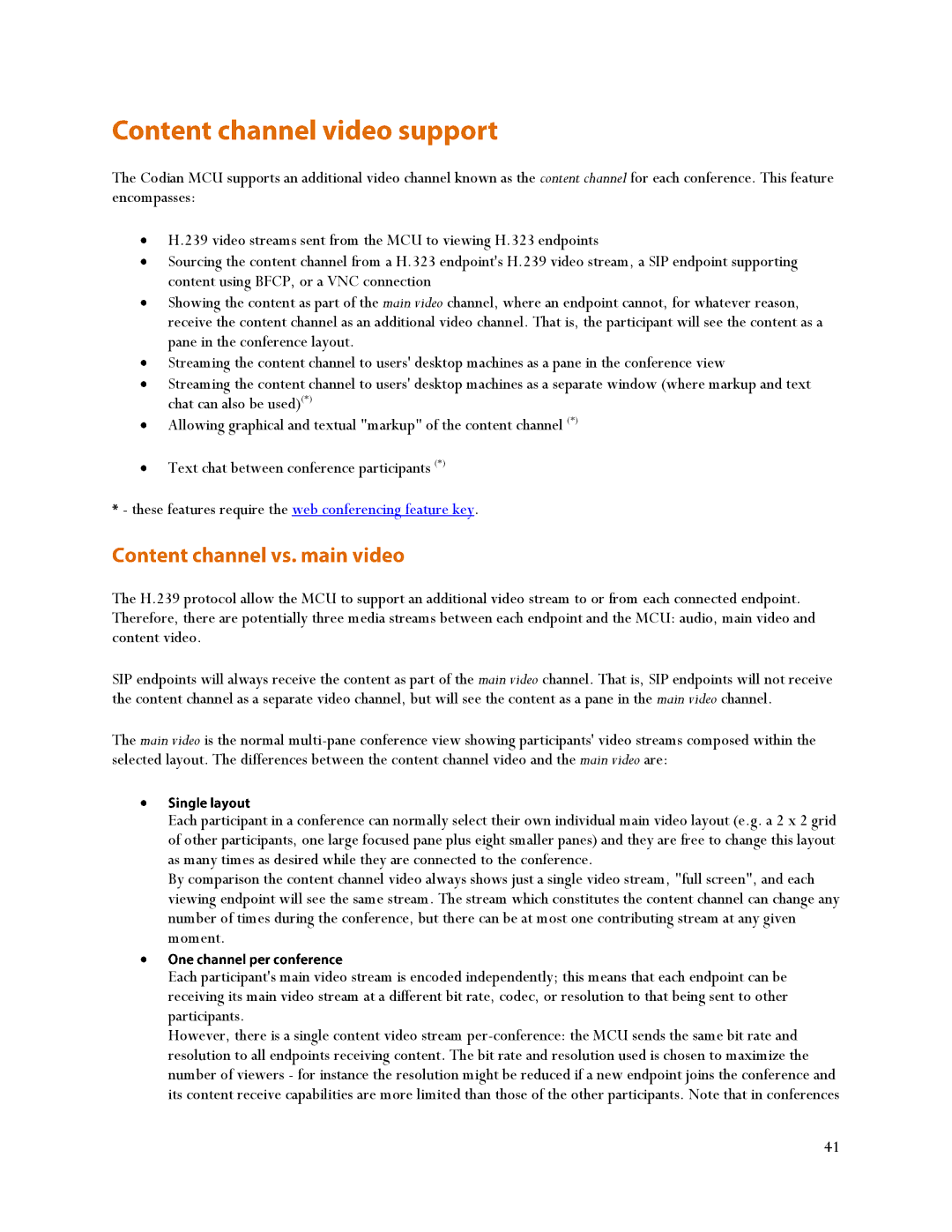
The Codian MCU supports an additional video channel known as the content channel for each conference. This feature encompasses:
H.239 video streams sent from the MCU to viewing H.323 endpoints
Sourcing the content channel from a H.323 endpoint's H.239 video stream, a SIP endpoint supporting content using BFCP, or a VNC connection
Showing the content as part of the main video channel, where an endpoint cannot, for whatever reason, receive the content channel as an additional video channel. That is, the participant will see the content as a pane in the conference layout.
Streaming the content channel to users' desktop machines as a pane in the conference view
Streaming the content channel to users' desktop machines as a separate window (where markup and text chat can also be used)(*)
Allowing graphical and textual "markup" of the content channel (*)
Text chat between conference participants (*)
-these features require the web conferencing feature key.
The H.239 protocol allow the MCU to support an additional video stream to or from each connected endpoint. Therefore, there are potentially three media streams between each endpoint and the MCU: audio, main video and content video.
SIP endpoints will always receive the content as part of the main video channel. That is, SIP endpoints will not receive the content channel as a separate video channel, but will see the content as a pane in the main video channel.
The main video is the normal
Each participant in a conference can normally select their own individual main video layout (e.g. a 2 x 2 grid of other participants, one large focused pane plus eight smaller panes) and they are free to change this layout as many times as desired while they are connected to the conference.
By comparison the content channel video always shows just a single video stream, "full screen", and each viewing endpoint will see the same stream. The stream which constitutes the content channel can change any number of times during the conference, but there can be at most one contributing stream at any given moment.
Each participant's main video stream is encoded independently; this means that each endpoint can be receiving its main video stream at a different bit rate, codec, or resolution to that being sent to other participants.
However, there is a single content video stream
41
